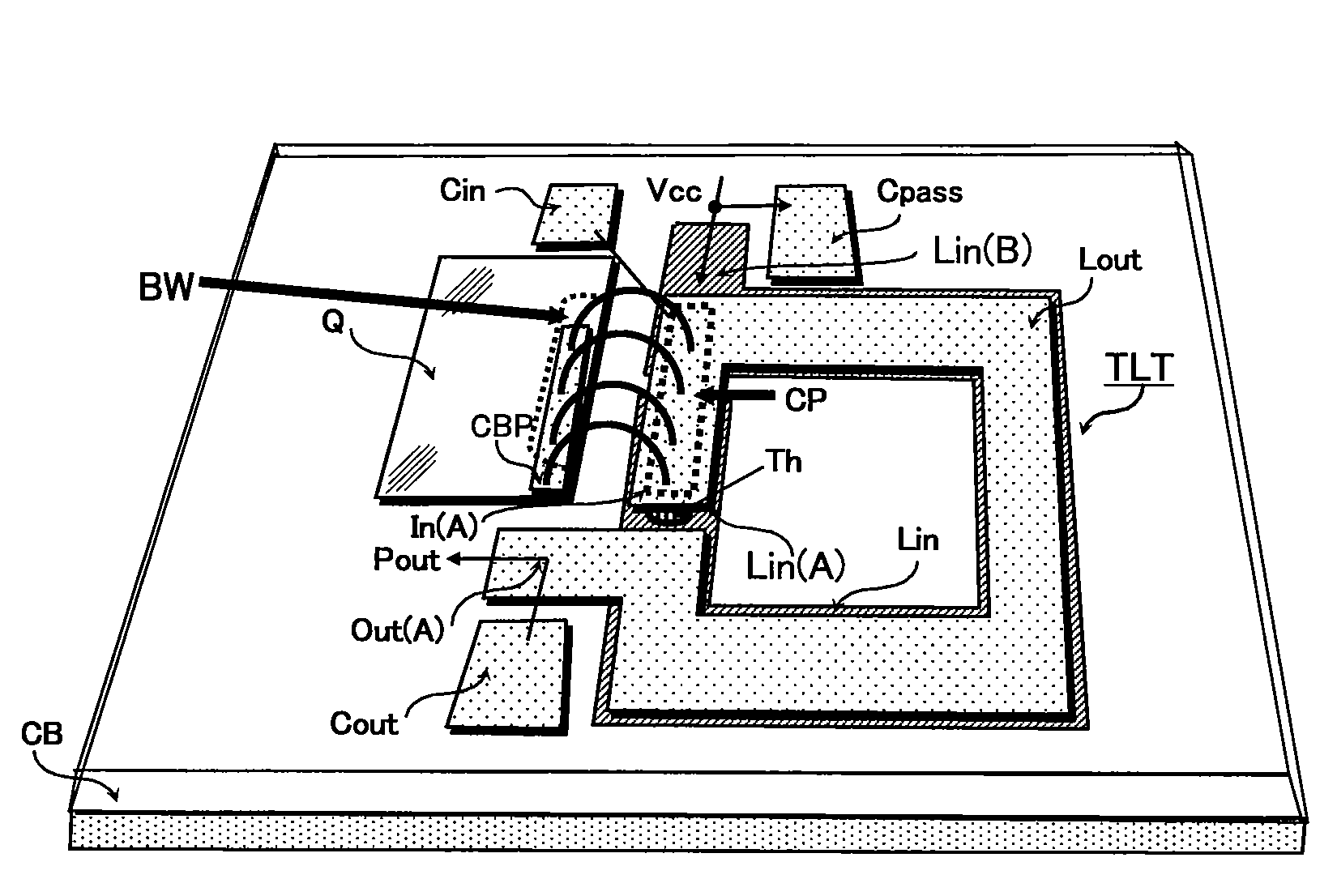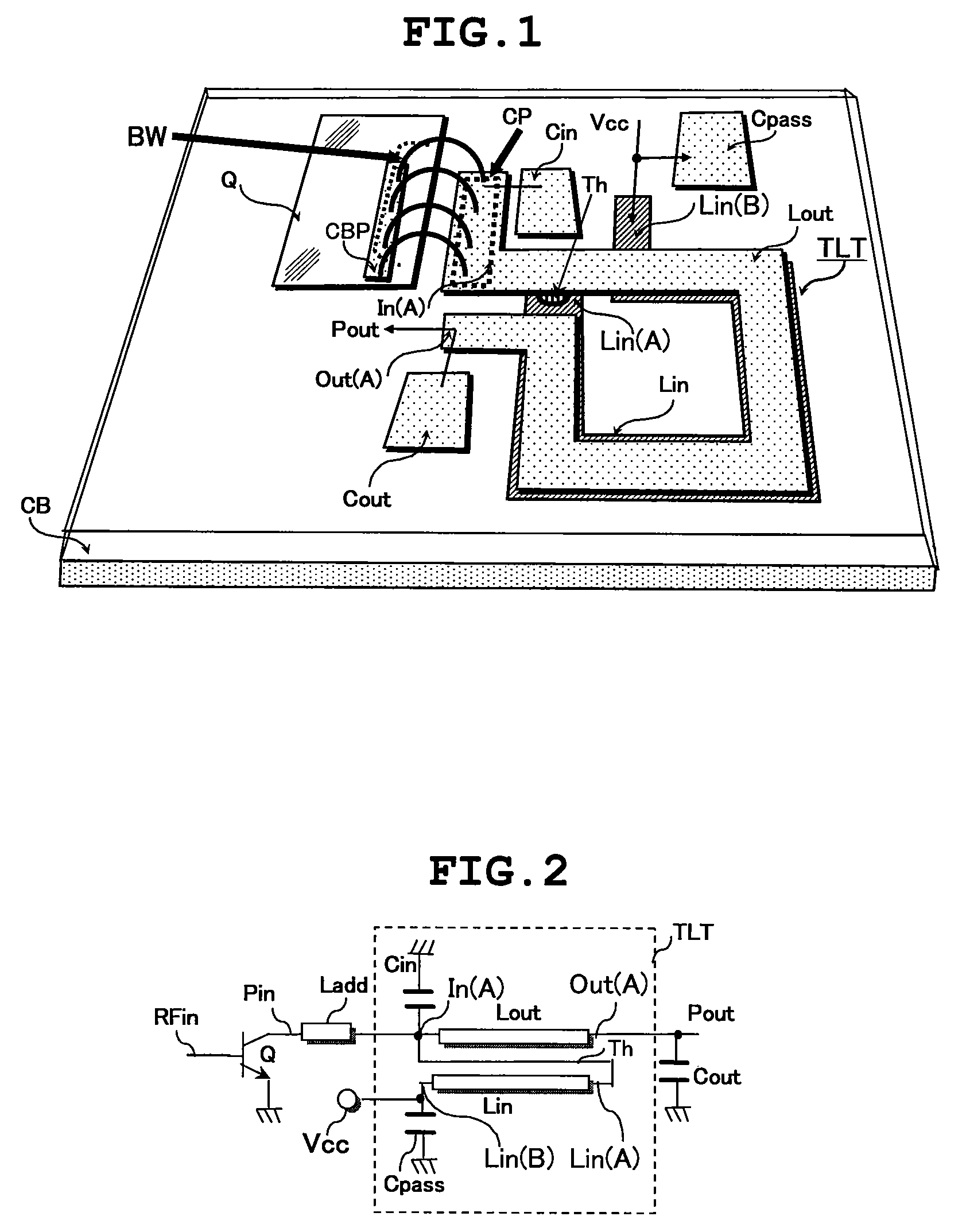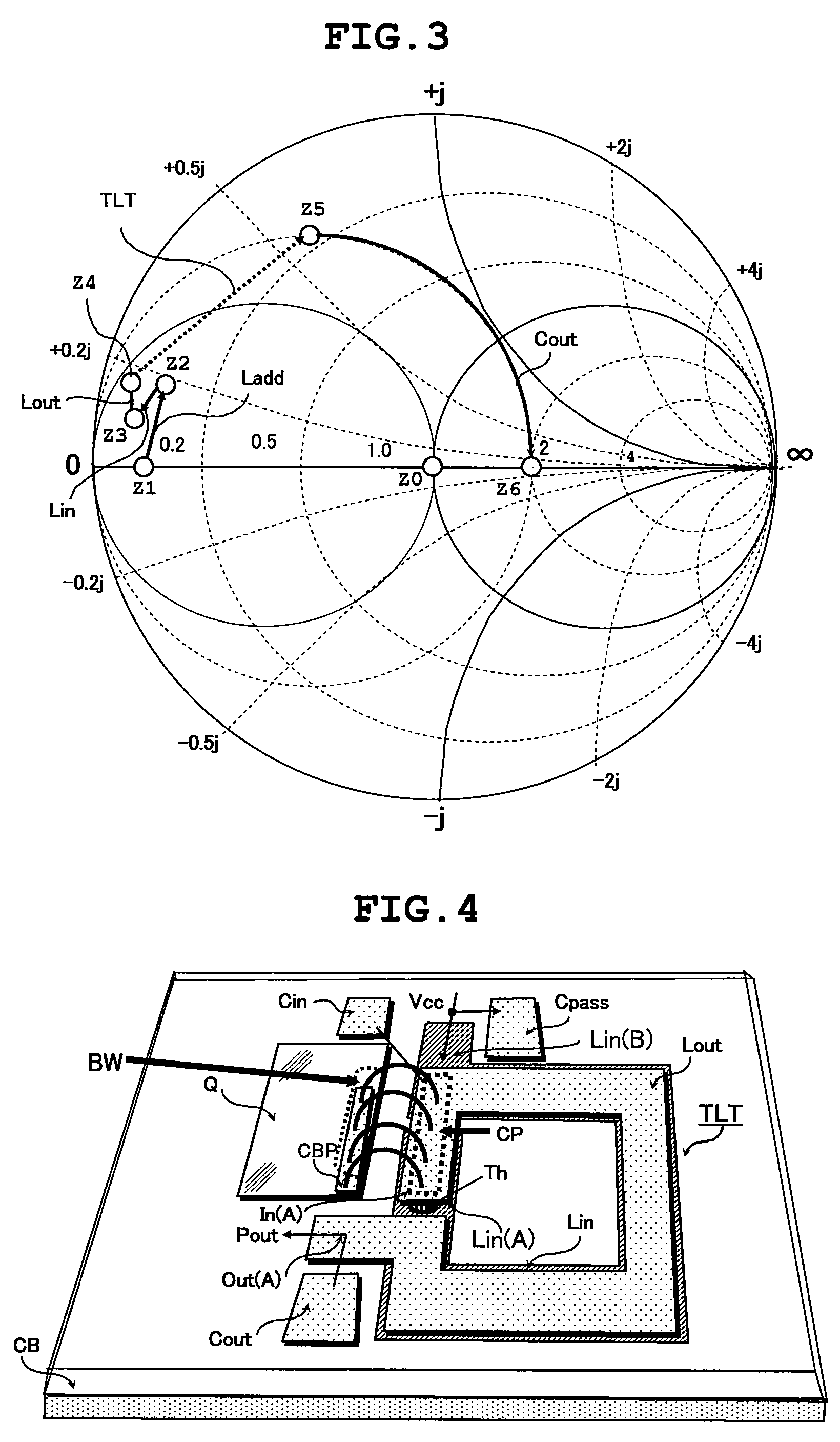RF amplifying device
a technology amplifier, which is applied in the direction of amplifiers with semiconductor devices/discharge tubes, amplifiers with coupling networks, dual/triple band amplifiers, etc., can solve the problems of large current-carrying capacity and high q factor of rf choke inductor, large occupied area of spiral coils, over semiconductor chips or interconnection substrates, etc., to achieve high q factor, low parasitic resistance, and large current-carry
- Summary
- Abstract
- Description
- Claims
- Application Information
AI Technical Summary
Benefits of technology
Problems solved by technology
Method used
Image
Examples
Embodiment Construction
Representative Embodiment of the Invention
[0055]First, the overview of a representative embodiment of the invention, disclosed under the present application, is described hereinafter. It is to be understood that a reference numeral inside the parentheses, referred to in the drawings, in description of the overview of the representative embodiment of the invention, simply indicates what is included in the concept of a constituent element with the reference numeral affixed thereto, by way of example.
[0056][1] An RF amplifying device according to the representative embodiment of the invention comprises a power transistor (Q) for generating transmission power to be fed to an antenna of a wireless device, and a transmission line transformer (TLT) coupled to an output electrode (CBP) of the power transistor.
[0057]The transmission line transformer includes a main line (Lout), and a secondary line (Lin). The transmission power from the output electrode of the power transistor is fed to one ...
PUM
 Login to View More
Login to View More Abstract
Description
Claims
Application Information
 Login to View More
Login to View More - R&D
- Intellectual Property
- Life Sciences
- Materials
- Tech Scout
- Unparalleled Data Quality
- Higher Quality Content
- 60% Fewer Hallucinations
Browse by: Latest US Patents, China's latest patents, Technical Efficacy Thesaurus, Application Domain, Technology Topic, Popular Technical Reports.
© 2025 PatSnap. All rights reserved.Legal|Privacy policy|Modern Slavery Act Transparency Statement|Sitemap|About US| Contact US: help@patsnap.com



